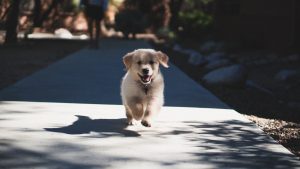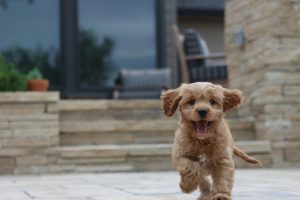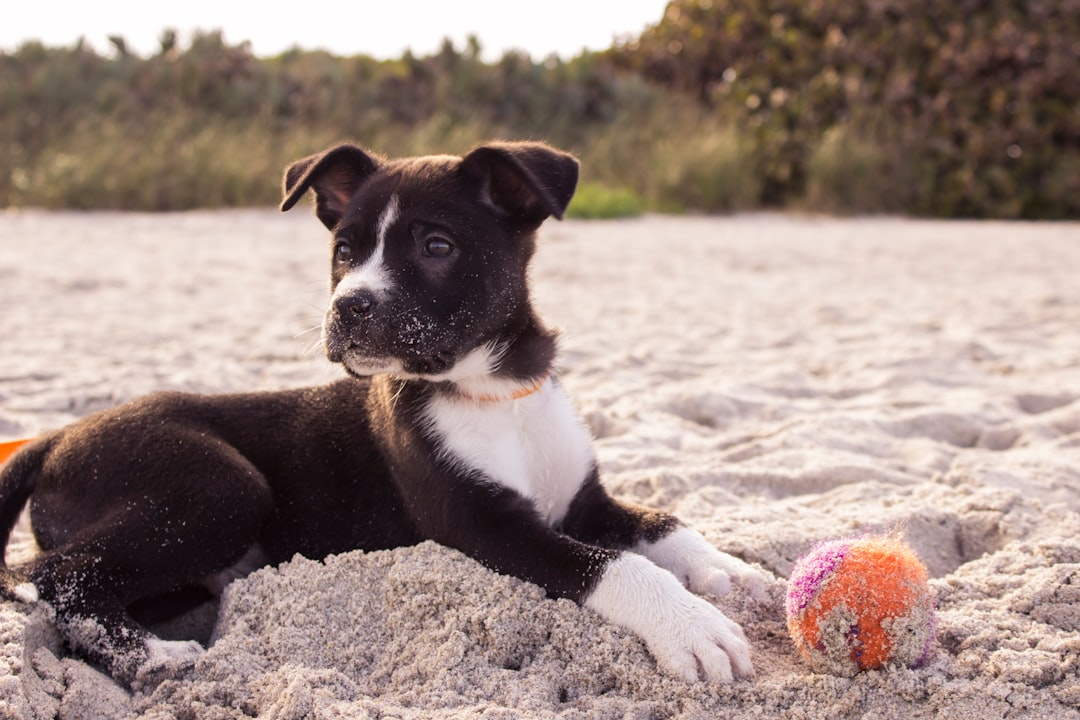The Ultimate Guide to Successfully Potty Training Your Puppy
A Practical Guide to Potty Training a Puppy – Importance of consistent routine, effective tools, and positive reinforcement for successful potty training.
Importance of Potty Training for a Puppy’s Well-being and the Owner’s Convenience
Potty training is a critical component of a puppy’s early development and has far-reaching implications for both the well-being of the puppy and the convenience of the owner. House soiling is a leading cause of dogs losing their homes or ending up in shelters, making effective potty training an essential skill for pet owners. By understanding the significance of potty training, owners can take proactive steps to prevent this issue, ensuring a harmonious and enduring relationship with their furry companions.
Research and planning are fundamental to successful potty training, as emphasized by experts. This involves understanding the best practices, exploring various training methods such as crate training, paper training, and indoor potty training, and creating a structured plan to establish a consistent routine. Additionally, a well-thought-out approach to diet control and regular exercise is crucial for the success of potty training. The commitment to these essential elements not only fosters a clean and healthy environment but also contributes to the overall well-being and happiness of the puppy. Moreover, it enhances the owner’s convenience and promotes a positive bonding experience between the puppy and its caregiver.
 Understanding the Basics of Potty Training
Understanding the Basics of Potty Training
Potty training a puppy is a vital aspect of pet ownership, as it sets the foundation for a long and harmonious life together. It is essential to understand that puppies have developing bladders and need consistent guidance to learn appropriate elimination habits. Consistency, patience, and positive reinforcement are crucial elements in the potty training process, helping the puppy understand the expected behavior and encouraging their progress.
For example, introducing a consistent routine for potty breaks and using positive reinforcement, such as treats and praise, when the puppy eliminates in the designated spot outside can significantly accelerate the training process. This consistent approach helps the puppy associate going to the bathroom with positive experiences, reinforcing the desired behavior. Potty training a puppy can be broken down into smaller steps for success.
Ideally, house training should begin between 12-16 weeks old, as recommended by experts. However, it’s important to recognize that the duration of the training process can vary based on individual factors such as the puppy’s age, learning history, and the methods used. By understanding these basics, pet owners can approach potty training with realistic expectations and a comprehensive understanding of the process.
Establishing a Consistent Routine for Potty Training
When it comes to potty training a puppy, establishing a consistent routine is essential for success. One of the most effective methods is crate training, which helps the puppy learn to control their bladder and bowel movements. By providing a designated space for the puppy to rest and sleep, the crate becomes a valuable tool in teaching the puppy to hold it until they can go outside. This method also aligns with the natural instinct of dogs as den animals, as they seek out a secure and comfortable space for themselves [2].
In addition to crate training, frequent walks outside play a significant role in reinforcing the routine and helping the puppy understand when and where they should go potty. Consistency in schedule, diet control, and regular exercise are equally important factors for successful potty training. By following a consistent routine for feeding, potty breaks, playtime, and sleep, the puppy learns to anticipate and adapt to specific times for eliminating, making the training process more effective and efficient.
Observing the puppy’s behavior and learning their individual signals and rhythms is also crucial. Every puppy has unique ways of communicating their need to eliminate, such as whining, circling, sniffing, barking, or scratching at the door. Understanding these cues and establishing a housetraining schedule that aligns with the puppy’s natural rhythms and needs can significantly contribute to the success of potty training. By paying close attention to the puppy’s behavior and adhering to a consistent routine, owners can set their puppies up for successful potty training and minimize accidents inside the house.
 Effective Tools and Techniques for Potty Training
Effective Tools and Techniques for Potty Training
When it comes to potty training, crates are an essential tool that can significantly aid in the process. Dogs are den animals by nature, and a crate provides them with a secure and controlled space that aligns with their instincts. By using a crate, puppies learn to “hold it” and understand the concept of a designated potty area, which is crucial for successful potty training [2]. For example, a properly sized crate that the puppy sees as its home, not a form of punishment, can help in establishing a positive association with the crate and facilitate the potty training process.
In contrast, the use of puppy pads and paper training can present challenges by reinforcing the option of going potty inside the house. Instead, taking the puppy to a specific outdoor potty spot and using a verbal cue to encourage elimination can effectively establish the desired behavior of going potty outside. Consistency and positive reinforcement in this approach can help the puppy understand where it should relieve itself, ultimately contributing to successful potty training. For instance, consistently using a specific verbal cue, such as “Go potty,” when the puppy is in the designated outdoor spot can create an association between the cue and the action, making it more likely for the puppy to eliminate in the right place.
Positive Reinforcement and Handling Accidents
Positive reinforcement plays a crucial role in potty training a puppy. By controlling the puppy’s diet and providing praise and rewards for going potty outside, you are reinforcing the desired behavior [2]. For instance, when your puppy eliminates in the designated spot outside, immediately praise them and offer a small, tasty treat as a reward. This positive association encourages the puppy to repeat this behavior, making it an effective method for potty training.
In addition to positive reinforcement, addressing housetraining problems is important for successful potty training. If you encounter difficulties or notice signs of distress in your puppy’s potty training, seeking help from a vet or professional trainer is recommended [2]. They can provide valuable guidance and support to overcome any challenges and ensure a smooth potty training process.
Accidents are a common part of the potty training journey, and they should be handled with patience and positive reinforcement. Instead of scolding or punishing the puppy for accidents, use a firm “NO” and redirect them to the correct spot. Enzymatic cleaners should be used to eliminate the odor of accidents, as they break down the components of urine and discourage the puppy from repeating the behavior in the same spot [3]. This approach helps the puppy understand where they should be eliminating and contributes to the success of the potty training process.
 Patience and Persistence in Potty Training
Patience and Persistence in Potty Training
Potty training a puppy is a process that demands time, patience, and persistence. It’s important to understand that accidents will happen, and setbacks are a natural part of the learning curve. By maintaining a positive and consistent approach, the puppy can learn to associate going potty in the right place with positive reinforcement, creating a foundation for good behavior in the future.
For instance, if the puppy has an accident inside the house, it’s crucial not to scold or punish them, as this can lead to fear and anxiety. Instead, use a firm voice to interrupt them, then take them outside to their designated potty spot to reinforce the right behavior. Positive reinforcement, such as offering a high-value treat or using verbal praise, can help the puppy understand that going potty outside is the desired behavior. This approach teaches the puppy to make the connection between the action and the positive outcome, contributing to successful potty training in the long run [3].
Additionally, the patience and persistence demonstrated during potty training can have a lasting impact on the puppy’s development. Learning to understand and respond to the puppy’s needs fosters a strong bond between the owner and the dog. It also instills a sense of trust and security in the puppy, which can positively influence their behavior and confidence as they grow into adulthood. This demonstrates the broader implications of potty training, as it contributes to the overall well-being and happiness of the puppy, setting the stage for a fulfilling and harmonious relationship between the puppy and its owner [3].

